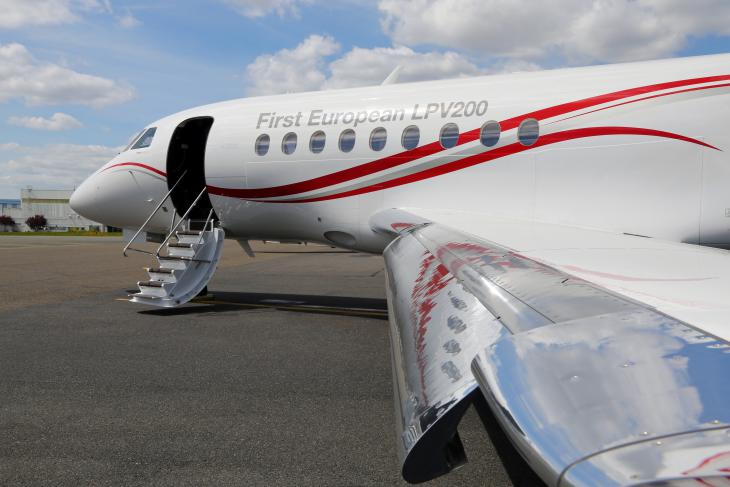
European GNSS Agency (GSA) says new EGNOS service will offer better access to airports and reduce delays, diversions and cancellations.
The European GNSS Agency (GSA) has launched new technology that provides pilots with enhanced instruments for safer aircraft landings, even in poor weather conditions. The announcement was made at the annual EGNOS Service Provision Workshop being held this week in Copenhagen.
LPV-200 (Localizer Performance with Vertical guidance) delivers accurate information on an aircraft’s approach to a runway with the use of GNSS positioning technology. The result is lateral and angular vertical guidance without the need for visual contact with the ground until an aircraft is 200 feet above the runway.
LPV-200 is a key milestone in the development of European Satellite Navigation and EGNOS (European Geostationary Navigation Overlay Service), which provides GPS augmentation in Europe. LPV-200 is free and requires no upgrade to an airport’s ground infrastructure or to existing certified EGNOS receivers.
Watch This: EGNOS for the Aviation Sector
“EGNOS LPV-200 is now the most cost effective and safest solution for airports,” said GSA Executive Director, Carlo des Dorides. “This is another big step forward for European satellite navigation and aviation.”
With LPV-200, passengers in Europe will see increased accessibility to airports. Pilots can land an aircraft more safely, especially in bad weather conditions, thus reducing delays, diversions and cancellations. The more efficient landings allowed for by LPV-200 will also cut costs and fuel consumption, reducing the overall cost of air travel.
The Details
The new EGNOS LPV-200 service level now enables aircraft approaches that are operationally equivalent to ILS CAT I: providing lateral and angular vertical guidance without the need for visual contact with the ground until a Decision Height (DH) of down to only 200 ft. above the runway. These EGNOS-based approaches are considered ILS look-alike, but without the need for the expensive ground infrastructure required for ILS.
EGNOS LPV-200 based approaches, lowered from LPV-250, guarantee all the advantages provided by an ILS CAT I approach with the airspace design flexibility of a PBN approach. Benefits include:
- Reduced risks associated with landing in bad weather conditions
- Increased accessibility to airports
- Reduced delays, diversions and cancellations (cutting costs)
- Increased airspace capacity and reduction of both ATC and pilot workload
- Improved efficiency of operations, lowering fuel consumption, CO2 emissions and decreasing aviation’s environmental impact
This new EGNOS Safety of Life (SoL) service level is available free of charge to all European users within the service coverage area. EGNOS LPV-200 supports civil aviation operations during approaches to airports and helipads. The service requires no upgrade to an airport’s ground infrastructure or to existing certified EGNOS receivers.
Read This: EGNOS in Action – Aviation
LPV-200 is a key milestone in the development of European Satellite Navigation and EGNOS, Europe’s SBAS, which has provided civil aviation-certified GPS augmentation over Europe since 2011. Today over 150 European Airports use EGNOS and it is estimated that by 2018 the number will increase to 440.
More Information
Media note: This feature can be republished without charge provided the European GNSS Agency (GSA) is acknowledged as the source at the top or the bottom of the story. You must request permission before you use any of the photographs on the site. If you republish, we would be grateful if you could link back to the GSA website (http://www.gsa.europa.eu).